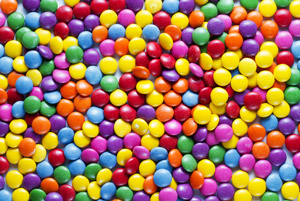 Sugar is the low-carb dieter’s enemy number one.
Sugar is the low-carb dieter’s enemy number one.
Unfortunately, most of us became addicted to it during our pre-low-carb lives, so cravings for sweet foods can be a big challenge.
Many alternatives to sugar are available. However, this doesn’t mean you can just keep consuming heaps of artificially sweetened treats.
It is always better to have sweeteners instead of real sugar, but I do not recommend doing so every day. Instead, try to think of them as an occasional treat. Here’s why:
Most sugar substitutes are heavily processed and unnatural
Just like their evil brother sugar, most artificial sweeteners are a result of a complex refining process. They are not natural.
If you follow Paleo diet, or simply trying to eat clean, then they are definitely not for you. Clean-eating-compliant ingredients such as honey or agave nectar are unfortunately quite high in carbs.
Fight through the cravings to banish them forever
One of the benefits of a low-carb diet is the opportunity to “wean” yourself off sweets altogether.
Most Western people are addicted to sugar, having consumed far too much of it since early childhood.
Cutting it out will recalibrate your palate so that eventually cravings will just stop. Having sweeteners might slow down this process.
Sweeteners could make you crave real carbs
As most sweet foods are laden with sugar, your body is used to having a spike in blood sugar after eating something sweet. As artificial sweeteners don’t have an impact on your blood glucose, this expectation won’t be realised.
You might end up craving carbs even more.
Sweeteners include fillers, some are high in carbs
Artificial sweeteners have a high taste intensity, and only require a tiny amount for a high impact.
This is not always practical. They tend to be mixed with other substances to make up the bulk similar to sugar.
One of the worst fillers is maltodextrin, which is derived from starch and will definitely send your blood sugar sky-high.
For example, the most common form of granulated Splenda available in UK supermarkets is mixed with this horrible filler (one has to wonder why they bother in the first place).
So always check the label and research any mysterious ingredients. Better still, buy products that are specifically designed for low-carb dieters or diabetics.
Some sweeteners are not suitable for cooking or baking
Some sweeteners (e.g. aspartame) break down into component substances when exposed to heat, and basically taste nasty.
Some (e.g. saccharine, xylitol) can have a distinctive chemical aftertaste. So do some research on your chosen sweetener to ensure it can handle whatever it is you are planning to do!
Sweeteners don’t work in baking like sugar does
Sweeteners don’t have the same chemical properties as sugar, for example, they don’t get caramelised.
Usually, you can’t just simply substitute sugar for a sweetener in a recipe (especially when baking) – some experimentation may be required.
Or just find low-carb recipes that specifically use sweeteners. There are plenty of blogs and websites that publish those (including mine, of course.)
My recommendations for low-carb baking and desserts
My favourite sweeteners are liquid Stevia or liquid sucralose for desserts, and Truvia (which is Stevia mixed with erythritol) for baking.
Stevia extract is not quite as wholesomely natural as its producers try to claim. Although it is derived from a plant, it undergoes a full-on chemical refining process. However, I still think it is probably as natural as it can get in the world of no-carb sweeteners.
So to summarise my main point – sweeteners are better than sugar, but must still be approached with some caution. Do your research to find one that works for you, and be moderate with it.